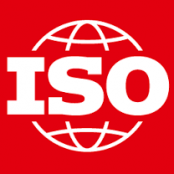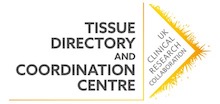ISO Biobank Standards
 Assuring researchers as to the quality or standard of a Biobank is an important issue. We are here to keep you abreast of all the latest developments in the field. You may have heard that new ISO Biobank standards are coming soon, but who is writing them and how can you get involved? Gareth Bicknell, HBRC Operations Manager at the University of Birmingham explains more here.
Assuring researchers as to the quality or standard of a Biobank is an important issue. We are here to keep you abreast of all the latest developments in the field. You may have heard that new ISO Biobank standards are coming soon, but who is writing them and how can you get involved? Gareth Bicknell, HBRC Operations Manager at the University of Birmingham explains more here.
What is ISO?
ISO is the International Standards Organisation.
What do they do?
ISO develops and publishes International Standards that are often mirrored at national level by national standards bodies (NSBs), such as BSI (the British Standards Institution). ISO standards do not replace national law. ISO creates documents that provide requirements, specifications, guidelines or characteristics that can be used consistently to ensure that materials, products, processes and services are fit for their purpose. The most well-known standards are ISO 9001 (quality management), ISO 14001 (environmental management), and ISO/IEC 27001 (information security management) but there are more than 21,000 other ISO standards that bring real and measurable benefits to almost every sector imaginable.
How are standards produced?
Each standard is produced by an ISO Technical Committee. The members of ISO – the NSBs – nominate experts to develop new standards using a consensus based approach. The committee working to produce standards in biotechnology is ISO/TC 276, and it consists of experts from 30 participating countries and 13 observing countries. Because of the large numbers of standards being developed, the work is delegated by the committee into five working groups, covering Terminology (WG1), Biobanks & Bioresources (WG2), Analytical Methods (WG3), Bioprocessing (WG4), and Data Processing & Integration (WG5). The first new standard has been drafted for biobanks and bioresources by ISO/TC 276/WG2, which has been meeting approximately every six months for three years.
What are the new standards?
The first new standards are ‘horizontal’ standards called ISO/DIS 20387 (DIS means draft international standard and identifies it is being at the public consultation stage). It provides a set of requirements and recommendations usable by any type of biobank, whether that be for biological material from humans, animals, plants, microbes, soil, cell cultures, etc.

Note that ISO/DIS 20387 is not written to cover biological material intended for food production or therapeutic use. Furthermore, ISO 15189 and other clinical standards apply first and foremost to human materials procured and used solely for diagnostic/treatment purposes.
ISO/DIS 20387 is a ‘normative’ document – it describes the minimum agreed requirements, recommendations, permissions, and possibilities/capabilities. It also contains notes to clarify the meaning. This standard is going to be supported by an ‘informative’ Technical Report that will give guidance on interpretation. This report is still in the stages of drafting, but it will be particularly useful, due to the breadth of the standard’s scope.
ISO/DIS 20387 has undergone multiple drafts before public consultation in order to achieve its stated aims. It is available for public comment until the 11th September 2017 – see ‘How do I find out more?’ for further information.
In support of the horizontal standard, several ‘vertical’ standards will be developed in time (based on international support for their need). The vertical standards will aim to provide specific additional requirements for certain sectors (such DNA banks, stem cell banks, etc.). At the moment, there are five vertical standards under development or consideration. Those under development are in the very early stages of drafting, so they are not yet open to public consultation, though you can volunteer as a UK expert if you wish to become involved. For information, these vertical standards are:

- Data management and publication in microbial biological resource centers [sic]
- Quality requirements for human mesenchymal stem cells
- Collection, processing, storage and transportation criteria for animal genetics resources
- Collection, processing, conserving and transportation criteria for human genetic resources
- Process requirements for mammalian cell lines
Further vertical standards will be considered as the current five drafts move to publication stage (or else are abandoned).
When will they become available?
Much work has gone into drafting the horizontal standard, ISO/DIS 20387 already. If only editorial comments are received, it will proceed to publication after discussion in Rome in November 2017. If there are significant technical comments, the document will proceed to a Final Draft International Standard (FDIS), after which only editorial comments can be provided before publication.
How do I become certified?
Certification is written assurance by an independent body (not ISO) that the product, service or system in question meets specific requirements. Once the horizontal standard has been published, you will need to contact UKAS to find out who is approved to provide formal certification against the new standard. If you operate a biobank licensed and inspected by the Human Tissue Authority, you are probably already well on your way to achieving compliance with the horizontal standard. However, there may be areas where you will need to tighten your quality system.
What do I get for being certified?
The ISO standard parallels work undertaken by organisations such as BBMRI-ERIC, the NCRI, the UKCRC TDCC, ESBB, ISBER and models such as BRISQ. Certification may improve your biobank’s marketability and increase your clients’ confidence in your service. Certification brings the knowledge that you have gone beyond the requirements of the HTA Codes and into a future of interoperability with other such biobanks. As treatments continue to improve, the supply of many tissues is predicted to dwindle, and the need for biobanks to provide material of equivalent quality is likely to become increasingly important to researchers and funders.
How do I find out more?
For more information on the language of standards, see the ISO’s how to write a standard.
For more information on how to become involved with BSI and ISO as an expert, please contact Rae Godin.
